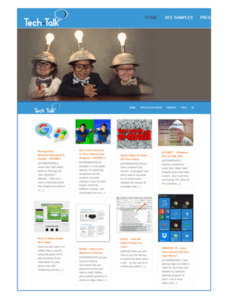The library’s copier is once again open for self-service, and not only is it a new machine, the procedure for using it has changed.
What’s Changed?
- We have a new copy/scan/fax machine, and its new location is near the new nonfiction books, across from the checkout desk.
- The new copier does not have a coin vending machine because the library wanted to be able to accept credit/debit cards for printing and allow patrons the option to create and fund their own copier accounts.
- We no longer have a separate fax machine. Faxing is now part of our copier’s functions. Our previous fax machine could only take credit/debit payment, but now users can pay in their preferred way.
- Users enter a code to start rather than putting coins in a vending machine.
The New Copy/Scan/Fax Procedure
- Walk up to the copier to start the copy, scan, or fax job. (Skip to next section for printing)
- Enter the code posted on the wall at the copier to login to the generic account and select the desired function. Choose “device functions” to copy, scan to usb, or fax. To scan to email, select the “scan” function.
- Refer to the instructions at the copier for next steps by function.
- Keep track of the number of copies made or fax pages sent. Scans are free. Copy cost is $.15 per black and white page or $.50 per color page. Fax cost is $1 per page.
- Head to a staff desk to pay for your copy/fax job(s). Cards can be taken at the checkout or reference desks, but currently only the checkout desk can take cash.
- Are you regular user? See a staff member to create your own copier account. You can add money to it and skip repeat trips to pay staff on future visits.
Printing at the Library
Printing is not yet self-service at the library, but there are a few different ways to get your job printed there.
- Use a library computer. Print jobs can be sent by the user, who then sees a staff member to pay for and release the print job.
- Send a print job from home using our print portal. Here is more information about how to use the print portal. After sending the job, report to the reference desk to print and pay. To print an email using this system, it must be saved as a pdf. If you don’t want to do that or you have difficulty with the print portal, you can try the next option.
- Email your print job to reference@eglibrary.org. When you arrive at the library, let the reference staff know you sent an email and they will print your job and take payment. Please note, library staff will do everything they can to maintain a user’s privacy, but this is the least secure printing method.
Got Questions?
Ask us in the comments or contact the library at eglibraryinfo@eglibrary.org or 518-477-7476.










